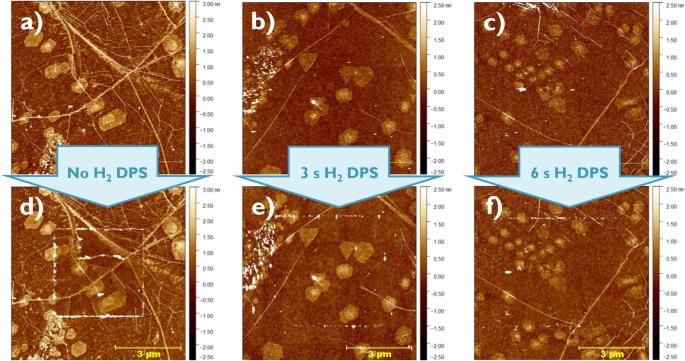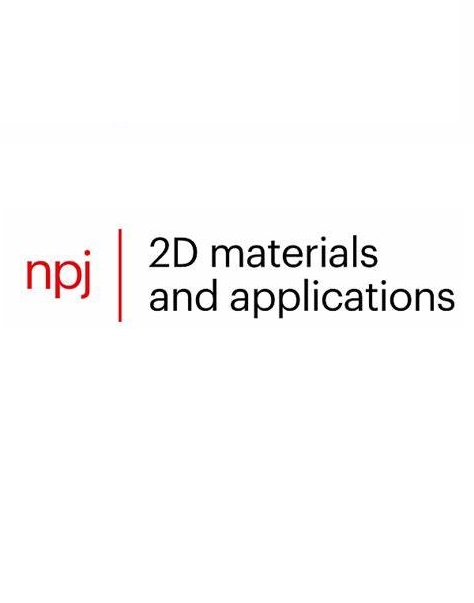通过牺牲氧化石墨烯播种层增强单层 WS2 的介电钝化
IF 8.8
2区 材料科学
Q1 MATERIALS SCIENCE, MULTIDISCIPLINARY
引用次数: 0
摘要
充分利用二维过渡金属二钙化物(2D TMDCs)面临着若干挑战,其中之一就是在二维表面实现均匀的材料沉积。实现材料生长的典型策略会导致界面质量不佳,从而降低二维过渡金属二掺杂化合物的性能。在这项工作中,基于氧化石墨烯的牺牲型播种层(1)用作钝化层,保护底层的二维 TMDC;(2)用作成核层,实现材料的均匀生长。石墨烯被转移到单层 WS2 上,建立起高质量的范德华界面。转移后,通过湿处理和干处理相结合的方法清洁石墨烯上的聚合物残留物,并通过干紫外线/O3 氧化实现功能化。石墨烯氧化的速率与基底有关,这可以用紫外光诱导的石墨烯和 WS2 单层之间的超快电荷转移来解释。在随后的 HfO2 ALD 过程中,碳-氧官能团可作为成核位点,与直接沉积相比,可实现更均匀的介电生长和更快的层闭合。基于石墨烯的成核/钝化方法具有适应性强的特点,可定制表面化学,实现任何替代材料的生长,同时保持完美的范德华界面。本文章由计算机程序翻译,如有差异,请以英文原文为准。

Enhancing dielectric passivation on monolayer WS2 via a sacrificial graphene oxide seeding layer
The full utilization of two-dimensional transition metal dichalcogenides (2D TMDCs) faces several challenges, among which is realizing uniform material deposition on the 2D surface. Typical strategies to enable material growth lead to a poor interface quality, degrading the 2D TMDC’s properties. In this work, a sacrificial, graphene oxide-based seeding layer is used (1) as passivation layer, protecting the underlying 2D TMDC and (2) as nucleation layer, enabling uniform material growth. Graphene is transferred on monolayer WS2, establishing a high-quality van der Waals interface. After transfer, the polymeric residues on graphene are cleaned via a combination of wet- and dry treatments and functionalized via dry UV/O3 oxidation. The rate of graphene oxidation is shown to be substrate dependent, which is explained by UV light-induced ultrafast charge transfer between the graphene and WS2 monolayer. The carbon-oxygen functionalities serve as nucleation sites in a subsequent HfO2 ALD process, achieving more uniform dielectric growth and faster layer closure compared to direct deposition. The graphene-based nucleation- / passivation approach offers adaptability, allowing for tailored surface chemistry to enable any alternative material growth, while maintaining a prefect van der Waals interface.
求助全文
通过发布文献求助,成功后即可免费获取论文全文。
去求助
来源期刊

npj 2D Materials and Applications
Engineering-Mechanics of Materials
CiteScore
14.50
自引率
2.10%
发文量
80
审稿时长
15 weeks
期刊介绍:
npj 2D Materials and Applications publishes papers on the fundamental behavior, synthesis, properties and applications of existing and emerging 2D materials. By selecting papers with the potential for impact, the journal aims to facilitate the transfer of the research of 2D materials into wide-ranging applications.
 求助内容:
求助内容: 应助结果提醒方式:
应助结果提醒方式:


